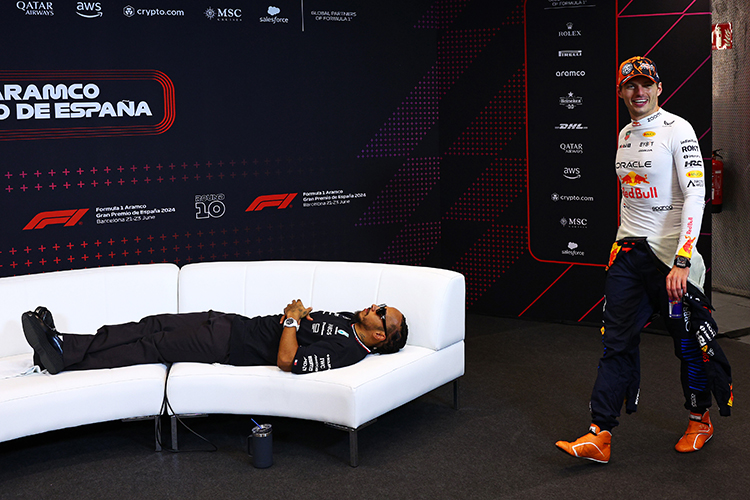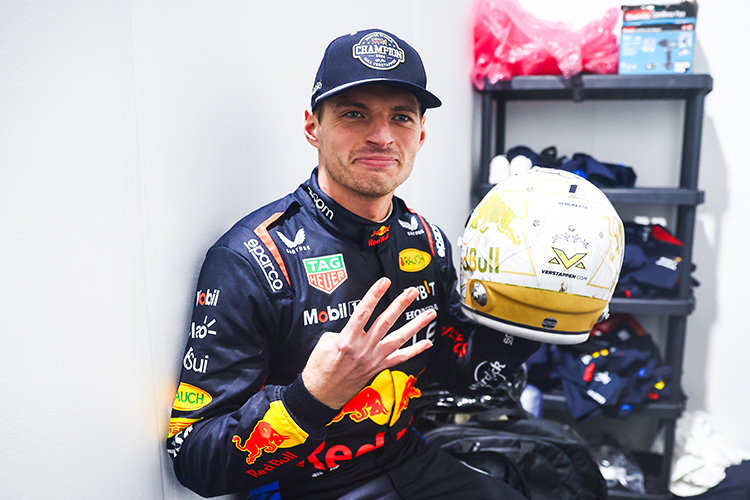F1 2026 regulations: power shifts and aero challenges reshape the future of racing
 Red Bull Racing/Red Bull Content Pool
Red Bull Racing/Red Bull Content Pool
F1's 2026 electrification: balancing power, speed, and innovation
Formula 1 is gearing up for a major overhaul in 2026, with sweeping changes to both engine and chassis regulations designed to bring the sport closer to environmental sustainability and maintain its reputation as the pinnacle of motorsport. The FIA, F1's governing body, is tasked with balancing a multitude of competing demands – from the technical objectives of ten teams and six engine manufacturers, to the expectations of millions of fans. The upcoming changes promise to shake up the sport, with new rules that will reshape how cars are powered, how they generate downforce, and how fast they can ultimately go.
Power shift
One of the key challenges is the shift toward greater electrification. By 2026, F1 aims to have engines with a 50/50 split between electric and combustion power, a massive leap from the current 80/20 ratio. The new power units will produce over 1,000 horsepower, but the way that power is delivered will change dramatically. The internal combustion engine’s output will drop to around 535 hp, while the electric motor, powered by the MGU-K system, will deliver 475 hp—comparable to the power output of an entire Formula E car.
However, this leap in electric power is not without issues. Under the new regulations, the battery will deplete three times faster than the current system, forcing the FIA to rethink aerodynamics to ensure cars can maintain performance over an entire lap.
The dramatic increase in battery power has necessitated a rethink of F1’s aerodynamic rules. With less fuel power to rely on, the FIA will slash the levels of drag that slow cars down on straights. This will be achieved through "active aerodynamics," including an enhanced drag reduction system (DRS) and a new "X-mode" that will allow drivers to activate low-drag settings at various points around the lap.
Unlike DRS, X-mode won’t be limited to overtaking but will be available to all drivers to reduce drag and preserve battery life. Flaps on both the front and rear wings will open, reducing downforce and drag, allowing the car to cut through the air with less resistance. While this will result in higher top speeds on straights, cornering speeds are expected to drop due to the reduction in downforce.
Concerns over performance drop
The reduction in downforce is one of the most contentious aspects of the 2026 regulations. Some team principals worry that the slower cornering speeds will diminish F1’s standing as the fastest motorsport series. "The way cars are in the draft version of the regulations... they are not fast enough in the corners and too fast on the straights," warned McLaren team principal Andrea Stella.
Williams team boss James Vowles echoed these concerns, pointing out that the gap between F1 and other series, such as Formula 2 and IndyCar, could narrow to just a few seconds per lap. "We need to make sure we're maintaining the performance and speed we have... the performance difference to an F2 car could be as small as a few seconds," Vowles noted.
Although the focus has been on reducing drag, there is growing sentiment that tweaks to the engine formula may be necessary. While McLaren’s Stella believes a solution could lie in adjusting the 50/50 power split to take pressure off the chassis, engine manufacturers are reluctant to reopen the debate. Mercedes team principal Toto Wolff was clear: "On the power unit side, that ship has sailed."
Still, FIA officials, including Nikolas Tombazis, have not ruled out potential adjustments if all manufacturers can reach an agreement. "Any tweaks that may be necessary will still need to be agreed with the power unit manufacturers," Tombazis said, indicating that flexibility could still exist in certain areas.
Refining the regulations
While concerns remain, the FIA has expressed confidence that solutions will be found before the final regulations are set in stone. "To increase the downforce of these cars is actually quite easy," Tombazis assured. He explained that starting with a conservative set of regulations gives the FIA room to grant teams more freedom to innovate as development progresses. The current draft, he noted, is likely the most restrictive version, with further revisions expected by the time teams start their aerodynamic research in early 2025.
Weight reduction
Another key aspect of the 2026 regulations is the goal of reducing car weight by 30 kilograms. This is intended to make the cars more agile and improve racing quality, but many in the paddock are skeptical. With increased demands on battery size and stronger safety structures, meeting this target will be a significant challenge. Williams' Vowles voiced doubts: "I don't think anyone will hit that weight target... It's going to be incredibly difficult."
The 2026 regulations are a work in progress, with the FIA committed to refining the rulebook in the months ahead. Despite the challenges, there is optimism that the new regulations will meet their objectives of making F1 more environmentally friendly while still delivering thrilling, high-speed racing. The next key milestone comes at the end of June when the FIA’s World Motor Sport Council will approve the first version of the chassis regulations. After that, the debate will continue as teams and engineers push for the best possible balance between performance, sustainability, and innovation.
The race to 2026 is well and truly on.
Up Next



